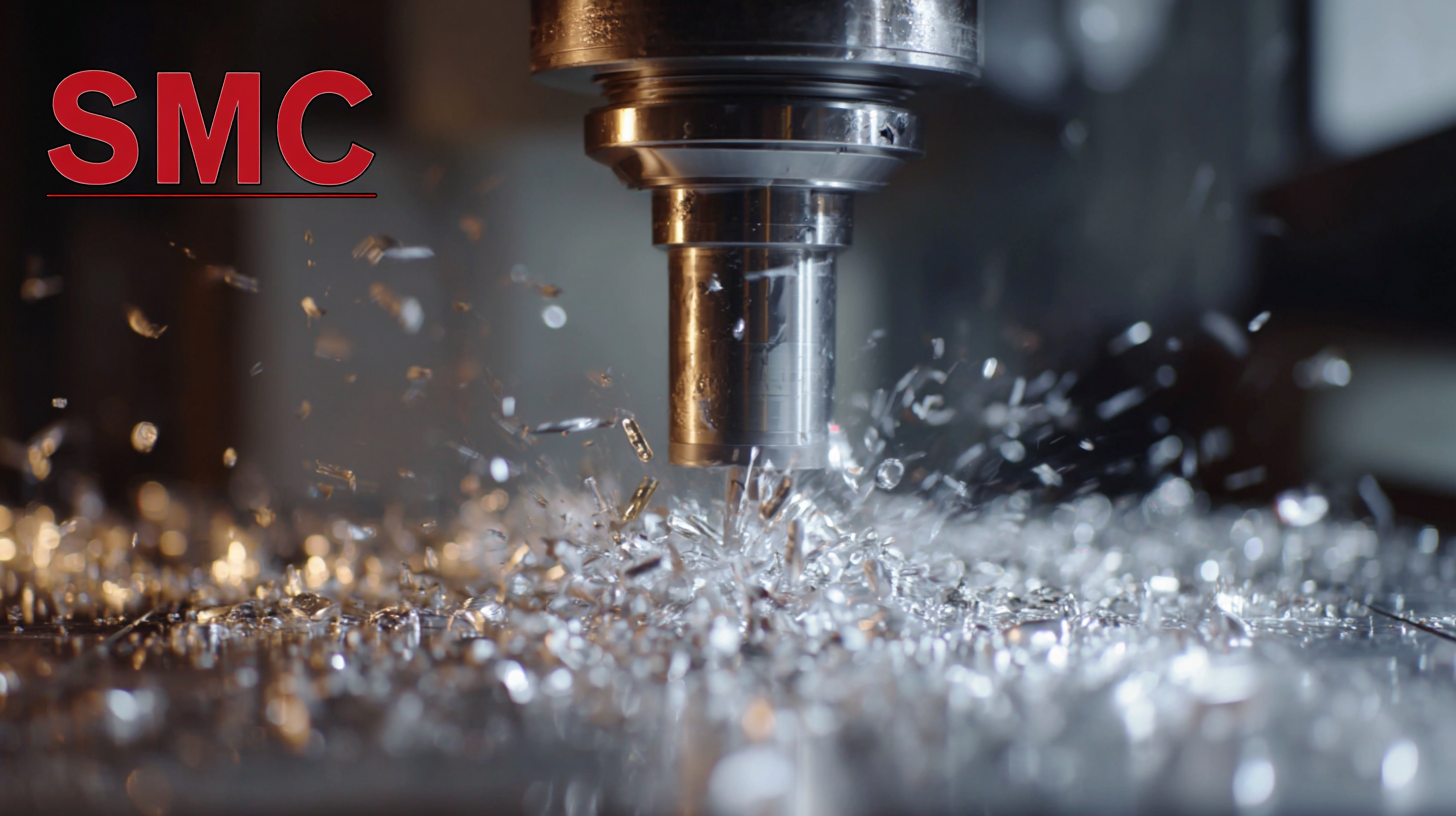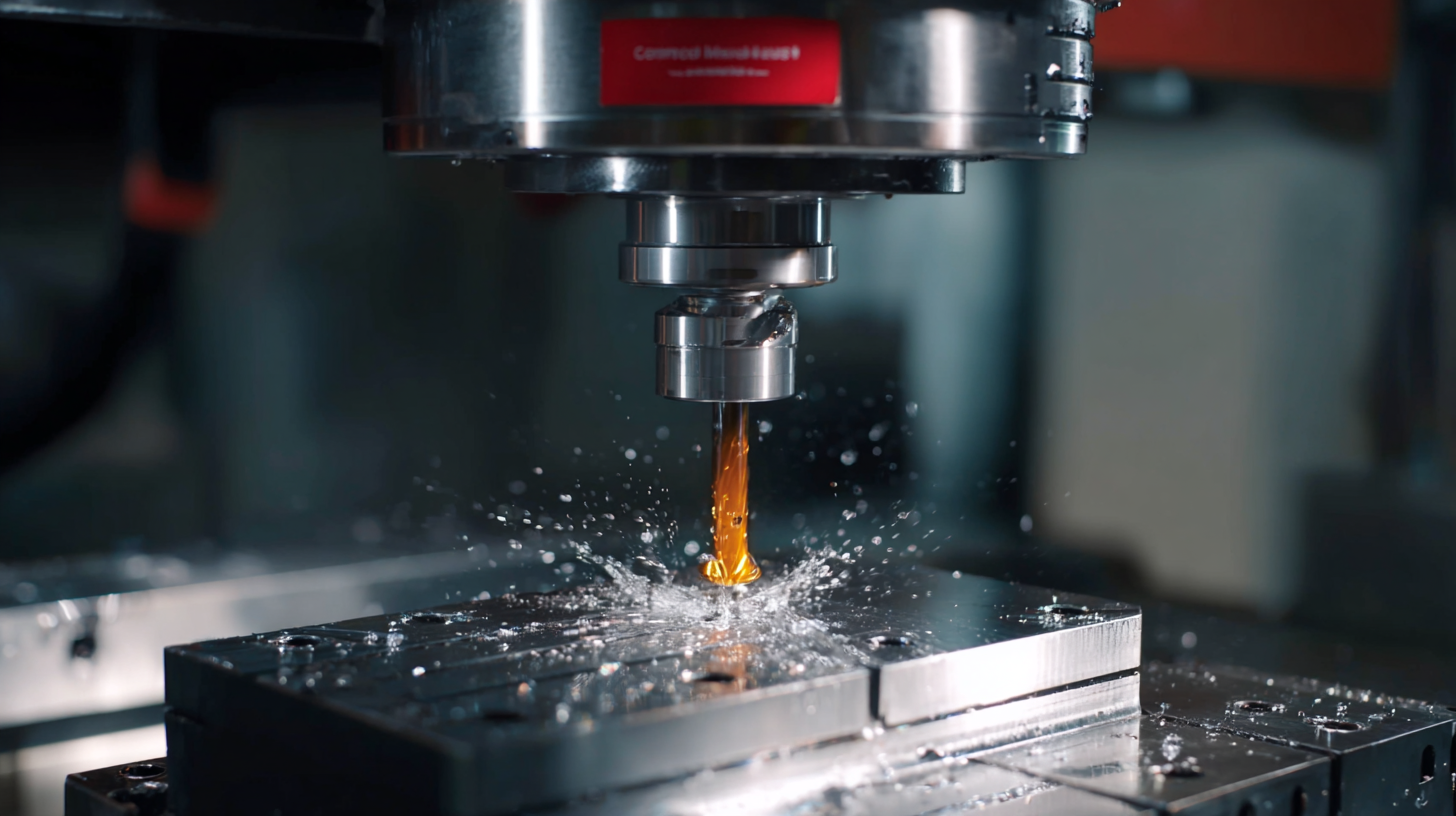Blog
Maximizing ROI with Top 5 Axis CNC Mills and the Future of After Sales Support and Maintenance Costs
In today's competitive manufacturing landscape, maximizing return on investment (ROI) is more critical than ever, and one of the key players in achieving this goal is the 5 axis CNC mill. These advanced machines offer unparalleled precision and versatility, enabling manufacturers to produce complex parts with higher efficiency and reduced cycle times. However, the initial investment in a 5 axis CNC mill is only part of the equation; managing after-sales support and maintenance costs is equally significant for long-term profitability. As technology evolves, understanding the future of these services becomes essential for staying ahead in the market. This blog will explore the top five 5 axis CNC mills that can drive your ROI, while also delving into the importance of robust after-sales support and effective maintenance strategies to ensure sustainable operational success.

Maximizing Production Efficiency with Axis CNC Mills: A Comprehensive Guide
Maximizing production efficiency is a key focus for manufacturers looking to stay competitive in today’s fast-paced market. Axis CNC mills play a crucial role in achieving this goal by offering advanced technology that improves precision, reduces waste, and enhances overall output. By incorporating features such as automated tool changes and multi-axis machining, these mills allow for complex shapes and designs to be produced quickly and accurately, thus streamlining the manufacturing process.
In addition to their operational capabilities, investing in top-quality Axis CNC mills can lead to significant long-term savings in maintenance costs and after-sales support. By choosing machines from reputable manufacturers that prioritize engineering excellence, businesses can ensure minimal downtime and reduced service expenses over the life of their equipment. This smart investment not only bolsters production efficiency but also enhances return on investment (ROI), making Axis CNC mills an essential asset for manufacturers aiming for sustained growth and innovation.
Key Features of Top 5 Axis CNC Mills for Enhanced ROI
In the rapidly evolving landscape of manufacturing, businesses are increasingly turning to 5-axis CNC mills to maximize their return on investment (ROI). Key features of these advanced machines include enhanced precision, increased flexibility, and the ability to produce complex geometries in a single setup. As industries expand, the global dental milling machine market is projected to grow from $984.9 million in 2025 to $1865.0 million by 2032, with a significant CAGR of 9.5%. This growth underscores the importance of investing in state-of-the-art technology to meet rising demand.

A pivotal aspect of maintaining ROI is the integration of intelligent workflows provided by advanced software solutions. For instance, enhancements in toolpath capabilities and overall functionality can significantly improve machining efficiency and reduce downtime. To maximize the performance of 5-axis CNC mills, businesses should consider regular training for operators and invest in software updates that refine operational capabilities.
Tips: When evaluating a 5-axis CNC mill for your production needs, look for machines that offer user-friendly interfaces and robust after-sales support. Additionally, consider incorporating predictive maintenance strategies to lower maintenance costs while ensuring optimal machine performance. Engaging with technology partners who provide comprehensive maintenance solutions can further enhance your return on investment.
Understanding After Sales Support: Importance in CNC Milling Operations
In the competitive landscape of CNC milling, understanding after sales support is crucial for maximizing operational efficiency and ROI. After sales support goes beyond just providing technical assistance; it encompasses services like training, maintenance, and timely repairs. With the right support, companies can reduce downtime and enhance their machining capabilities. This not only optimizes productivity but also increases the longevity of the CNC mills.
When selecting a CNC mill, it's essential to evaluate the after sales service offered by the manufacturer. Ensure they provide comprehensive training programs for your team, as skilled operators can significantly elevate your production quality. Additionally, consider mills that offer proactive maintenance schedules. Regular check-ups can identify potential issues before they become serious problems, saving time and costs in the long run.
Another key aspect is the accessibility of spare parts and technical support. Mills with a robust after sales network are better positioned to provide quick solutions, ensuring that your operations remain uninterrupted. Investing in a CNC mill with strong after sales support not only enhances productivity but ultimately drives down maintenance costs, contributing to a healthier bottom line.
Cost Management Strategies: Balancing Maintenance Expenses with Performance
In today's highly competitive manufacturing landscape, balancing maintenance expenses with performance is crucial for maximizing return on investment (ROI). One key strategy is implementing a preventive maintenance plan tailored to your specific operational needs. According to a report by the Aberdeen Group, organizations that prioritize preventive maintenance can achieve up to a 27% reduction in overall maintenance costs. This proactive approach not only extends the lifecycle of your axis CNC mills but also enhances their operational efficiency.
Tip: Regularly train your maintenance staff on the latest technologies and best practices. Studies show that well-trained personnel can help reduce downtime by at least 30%, ensuring that machines operate at peak performance.
Another vital aspect is the integration of remote monitoring systems. By utilizing IoT technology, manufacturers can monitor machine health in real-time, predict failures, and schedule maintenance precisely when needed. A study from McKinsey & Company highlights that companies implementing such technologies can cut maintenance costs by 10-20% while improving equipment uptime. This balance is essential for maintaining the competitive edge and profitability of your machining operations.
Tip: Analyze maintenance data to identify patterns and set benchmarks. Continuous evaluation will allow you to adjust your strategies and ensure you’re making informed decisions that align with your performance goals.

Future Trends in CNC Technology and Their Impact on After Sales Services
As the CNC (Computer Numerical Control) industry evolves, the future of after-sales service and maintenance is witnessing significant transformations driven by emerging trends in technology. With advancements in CNC machines, particularly the integration of automation and artificial intelligence, there is an increasing focus on reducing operational downtime and enhancing customer satisfaction. Companies are now looking to refine their after-sales strategies, not just to support existing machines but also to upgrade and integrate new technology more seamlessly.
The rise of predictive maintenance, powered by data analytics, allows manufacturers to anticipate equipment failures before they occur. This proactive approach not only minimizes interruption in production but also significantly lowers maintenance costs over time. The shift towards remote assistance and virtual support services has further enhanced the customer experience, allowing suppliers to resolve issues efficiently and immediately, thus fostering long-term customer relationships. As CNC technology continues to advance, companies that harness these trends are likely to gain a competitive edge in the ever-evolving market landscape.